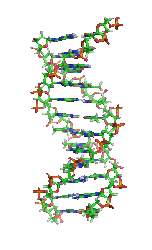Roughly 40 million people across the world are blind and, for a long time, most forms of blindness were permanent conditions. The same situation held for degenerative diseases that affect eyesight.
But recently, scientists have made some surprising headway into changing that. New treatments like gene therapy, stem-cell therapy, and even bionic implants are already starting to restore some patients' sight. And these technologies are expected to keep improving in the future.
Here's a look at all the ways scientists have tried and, increasingly, succeeded in curing the blind:
Children's Hospital of Philadelphia, Daniel Burke/AP Photo This undated image released by the Children's Hospital of Philadelphia shows doctors Albert Maguire, left, along with wife Jean Bennett at the University of Pennsylvania. The two are part of two teams of scientists in the United States and Britain that are using gene therapy to dramatically improve vision in four patients with an inherited eye disease that causes blindness in children.
Tweaking genes is one promising route to treat blindness.
In 2011, a group led by Jean Bennett of the University of Pennsylvania used gene therapy to treat some patients with a congenital blindness disorder. The patients in question all hada hereditary disease called Leber congenital amaurosis, and they all had mutations in their RPE65 gene.The patients were each given a non-harmful virus that could sneak a healthy copy of the gene into their eye cells. Six out of 12 showed improvement.
Then, in 2014, researchers led by Robert MacLaren, an ophthalmologist at Oxford,presented some promising early results of a very smallstudy of six patients at various stages of a rare, inherited disease calledchoroideremia. These patients all lacked a protein calledREP1, which leads to progressive vision loss. Doctors took the gene forREP1, put it in a non-harmful virus, and injected that virus into the patients' eyes. All reported some improvement in their sight.
"One patient, who before his treatment could not read any lines on an eye chart with his most affected eye, was able to read three lines with that eye following his treatment,"wrote Susan Young Rojahn at MIT Technology Review.
Commercial treatments are still a ways off, however. Researchers first have to continue to monitor these patients to see what happens to their vision over the long term (and check for side effects).The FDA currently recommends 15 years of safety monitoring before trying to get a specific gene therapy approved.
2) Stem cells
Read this article:
4 strategies doctors are using to cure the blind
